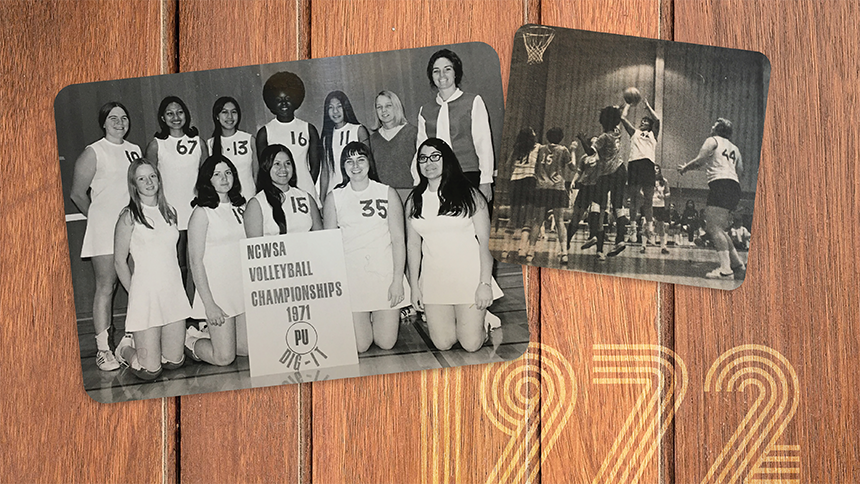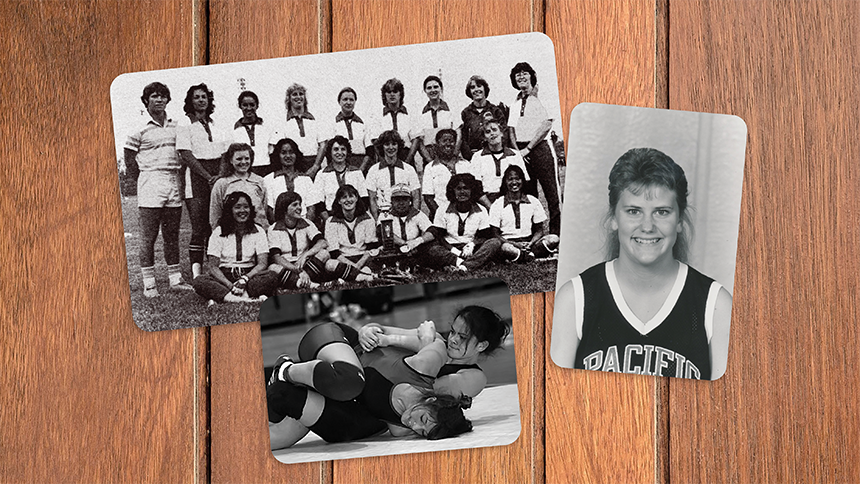Fifty Years Later, It's Clear Why Title IX Was Important
Why was Title IX necessary?
 The civil rights amendment of 1972 was needed because, simply, women weren’t treated as if they were equal to men in America before 1972. Whole industries were essentially closed to women, their pay lagged, and cultural messaging suggested they were either playthings or trophies for successful men.
The civil rights amendment of 1972 was needed because, simply, women weren’t treated as if they were equal to men in America before 1972. Whole industries were essentially closed to women, their pay lagged, and cultural messaging suggested they were either playthings or trophies for successful men.
The unequal treatment was evident in every stratum of American life, including the campuses of colleges like Pacific University, where women were required to abide by dress codes and curfews that didn’t apply to men.
University officials of the time surely would argue that they had the best interests of women at heart, but that was based on a cultural assumption that women needed protection from the harshness of a threatening world.
Consider the experience of Barbara (Williams) Crandall ’66, who said women rebelled against Pacific’s no-pants-except-on-weekends rule by wearing Bermuda shorts under a coat to classroom. “How daring!” she said, acknowledging in retrospect the silliness of the rule and the protest.
In the mid-1960s, first-year women “had either 7 p.m. or 7:30 p.m. curfews during the week,” said Monica Marvin ‘68. “Upper classwomen could stay out a little later — 10?”
Marvin said she was late getting back to her dorm a few times, and her penalty for arriving late was to clean the refrigerator on her dorm floor.
Crandall said a group of women students complained to Pacific’s dean of women about the double-standard of the curfew rule. They were told “that it was for our own protection because if we were out late our resistance would be low,” she wrote in an email. “Pacific's own form of birth control.”
What the handbooks tell us
Pacific Archivist Eva Guggemos delved into the campus climate for this story. Here is an excerpt from her lengthy email.
 Regulations were stricter for Pacific women than for men through at least the early 1970s. The 1971 student handbook, for example, included a single sentence for "men's regulations," which were simply stated as, "Resident hall men who are planning an overnight trip are requested to leave their name and destination with the hall counselor for use in case of an emergency."
Regulations were stricter for Pacific women than for men through at least the early 1970s. The 1971 student handbook, for example, included a single sentence for "men's regulations," which were simply stated as, "Resident hall men who are planning an overnight trip are requested to leave their name and destination with the hall counselor for use in case of an emergency."
Women, on the other hand, had a page worth of extra rules to follow, including:
- Freshmen women had a curfew of 11 p.m. Sunday-Thursday and 1:30 a.m. Friday-Saturday. But "two special late permissions until 12 o'clock may be grant each semester and one 2 o'clock's are allowed for the Homecoming Dance and Associated Women Students' Formal Dance."
- Freshmen women could also get special permission to be out late for "cultural events," at the discretion of the women's dormitory counselor or the Dean of Women. When they returned, though, they had to provide evidence in the form of ticket stubs from the event they attended.
- Freshmen women also had to sign out whenever they left the dorm after 7 p.m. and then sign back in on arrival.
As of 1971, the rules for students living in the dorms regarding "inter-visitation" (i.e. opposite sex visits in the dorms):
- Visiting hours were voted on by dorm residents each year
- When hosting a visitor of the opposite sex, the door had to be left open at least one foot, the guest had to be escorted to/from the room, at least one light had to be on in the room, "all visitors must remain in sitting position"
In addition to the above, each dorm had its own rules. As of 1971 Walter Hall — which was all-women — had rules including:
- Men could only visit between 1-10 p.m. Saturday and 1-7 p.m. Sunday; "Rules broken by the boy in the dorm will reflect on the girl he's visiting"
- "Girls unable to sign themselves in and walk to their rooms by themselves will be referred to the Judiciary Council. [Reasons:] Reputation of the hall, concern for the girl's well-being." [Note: There were no such special rules for men in other dorms regarding coming home intoxicated.]
- "Girls must be covered on way to and from sun-bathing area while passing through Formal Lounge [Reasons:] Distracting or annoying to visitors, 'unladylike'."
- "During the day (until 5 p.m.) girls should be decently covered because workmen are often on duty."
- Recreation Room Rules: "One person per chair; no lying on furniture in mixed couples"
- Formal Lounge Rules: "No excessive P.D.A. [...] that is, continuous kissing, lying on furniture or floors, visible petting or other intimate carryings-on."
The Dress Code by 1971 had been amended, so that women students did not have special rules specifically stating the length of skirts, etc.
Fifty years on
None of this is to say that equal treatment for women in America has been achieved. Women’s salaries, for example, still averaged about 82.3 percent of men’s in 2020, according to the U.S. Department of Labor, and women make up just 29 percent of America’s corporate boards, according to Moody’s Investors Service. But the enactment of Title IX in 1972 heralded the beginning of an era when America’s institutions gained awareness of the inequities and started to address them.
At Pacific, the student handbook today is focused on such matters as illegal recording, infectious disease protocols, property damage and binge drinking. Students are warned against “threatening, endangering and/or discriminatory behavior,” including physical abuse, sexual misconduct, harassment, bullying and intimidation.
Dress codes and curfews are no longer on the books.





